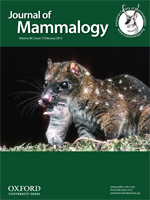In social species, individuals contact members of the same group much more often than those of other groups, particularly for contacts that could directly transmit disease agents. This disparity in contact rates violates the assumptions of simple disease models, hinders disease spread between groups, and could decouple disease transmission from population density. Social behavior of white-tailed deer has important implications for the long-term dynamics and impact of diseases such as bovine tuberculosis and chronic wasting disease (CWD), so expanding our understanding of their social system is important. White-tailed deer form matrilineal groups, which inhabit stable home ranges that overlap somewhat with others—a pattern intermediate between mass-action and strict territoriality. To quantify how group membership affects their contact rates and document the spectrum of social affiliation, we analyzed location data from global positioning system (GPS) collars on female and juvenile white-tailed deer in 2 study areas: near Carbondale in forest-dominated southern Illinois (2002–2006) and near Lake Shelbyville in agriculture-dominated central Illinois (2006–2009). For each deer dyad (i.e., 2 individual deer with sufficient overlapping GPS data), we measured space-use overlap, correlation of movements, direct contact rate (simultaneous GPS locations < 10 m apart), and indirect contact rate (GPS locations < 10 m apart when offset by 1 or 3 days). Direct contact rates were substantially higher for within-group dyads than between-group dyads, but group membership had little apparent effect on indirect contact rates. The group membership effect on direct contact rates was strongest in winter and weakest in summer, with no apparent difference between study areas. Social affiliations were not dichotomous, with some deer dyads showing loose but positive affiliation. Even for obvious within-group dyads, their strength of affiliation fluctuated between years, seasons, and even days. Our findings highlight the poor fit between deer behavior and simple models of disease transmission and, combined with previous infection data, suggest that direct contact is the primary driver of CWD transmission among free-living female and juvenile white-tailed deer.
How to translate text using browser tools
1 February 2015
Social affiliation and contact patterns among white-tailed deer in disparate landscapes: implications for disease transmission
Eric M. Schauber,
Clayton K. Nielsen,
Lene J. Kjær,
Charles W. Anderson,
Daniel J. Storm
ACCESS THE FULL ARTICLE

Journal of Mammalogy
Vol. 96 • No. 1
February 2015
Vol. 96 • No. 1
February 2015
CONTACT
disease
global positioning system
group
Illinois
landscape
Odocoileus virginianus




